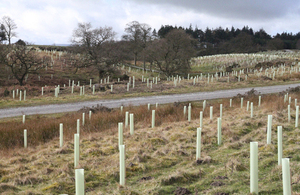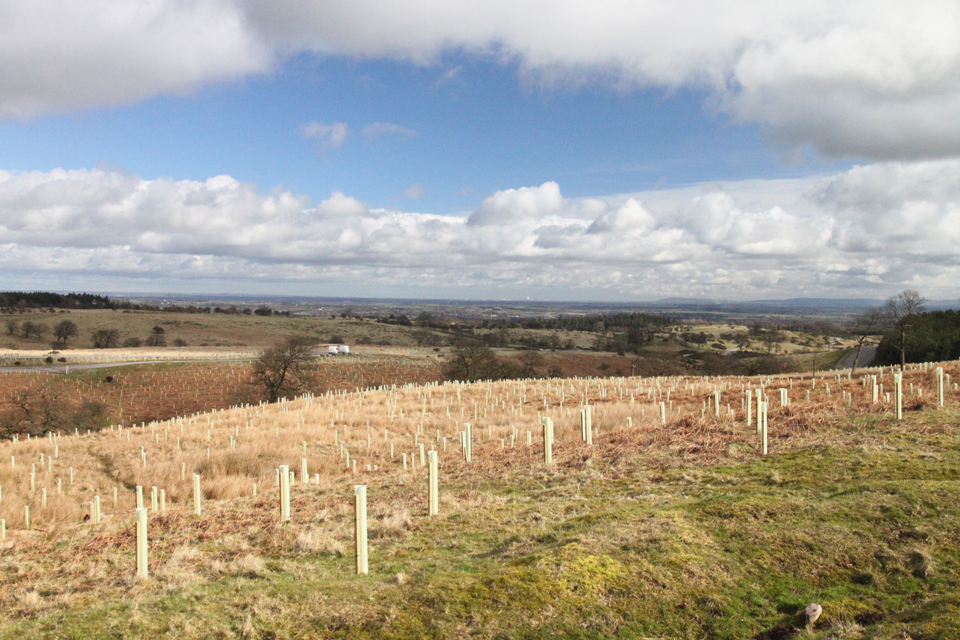New woodland boosts army training and flood defences
120 hectares of new woodland at a Yorkshire training area will improve soldiers' experience while reducing flood risk for local residents.

New woodland creation at Catterick training area [Picture: Crown copyright]
The Defence Infrastructure Organisation (DIO) worked with the Forestry Commission and the Woodland Trust to deliver the woodland at Catterick Training Area, which will provide further area for our armed forces to develop skills in using wooded areas as cover in battle.
The woodland also meets best practice guidelines set out by the Forestry Commission and Defra, and is part of Woodlands for Water (WfW), an initiative to enhance England’s water environment.
Jeremy Kalkowski, DIO’s head forester for the north eastern UK, said:
DIO supports our armed forces by providing what they need to live, work and train. Our cross-organisational working approach means that not only are we providing an improved facility for military training, but there are huge benefits to the people and communities around Catterick, as well as for the biodiversity and environment of the area.
WfW was established by the Forestry Commission and the Environment Agency to improve the quality of rivers and help against the causes of downstream flooding in England.

Some of the 120 acres of new woodland planted at Catterick [Picture: Crown copyright]
Planting on steep hillsides at Catterick reduces ground water flowing into the River Swale. In the last few years, large areas within the north east of England have been subject to flooding. It is hoped that the new woodland will help reduce the effects of flooding in the area.
Tenant farmers on Ministry of Defence (MOD) land at Catterick were able to apply for the Forestry Commission’s grant scheme, which covered their costs for planting 80 hectares of trees.
Jeremy Dick, the local woodland officer for the Forestry Commission, said:
The commission established the Woodlands for Water initiative with the Environment Agency in 2010. It’s great to see this project come to fruition where the scale and location of planting means reducing the flood risk.
120 hectares is a really good contribution towards our national woodland creation target.
The remaining 40 hectares are also being funded by WfW and the Woodland Trust. This means that no costs were incurred on the defence budget for the training ground.
Woodland Trust partnership manager Helen Chesshire said:
We are delighted to continue our partnership with DIO and create new native woodland across the MOD estate for both the benefit of the environment and the armed forces.
In addition to the planting at Catterick our partnership has created over 380 hectares of new native woodland at 6 other MOD sites, with a further 100 hectares to be planted in the autumn at 3 more sites.
The 120 hectare planting at Catterick is part of a wider woodland creation drive on the MOD’s training estate. Wherever possible, DIO seeks to use public funds to develop projects that meet the needs of multiple organisations, departments and local communities.